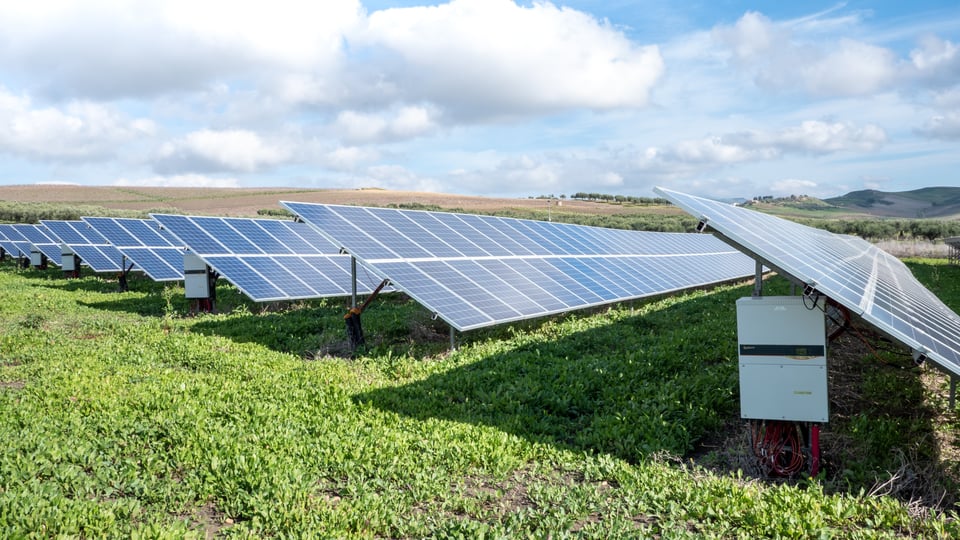The Government's Green Homes Grant (GHG) scheme to help landlords make their rental homes more energy efficient failed because most landlords didn't get to hear about the scheme, a survey reveals.
According to the National Residential Landlords Association (NRLA) , they found that few landlords had used the opportunity of using government money to make their rental homes more 'green'.
Indeed, most of the landlords responding to the survey said they had only heard of the government scheme when they completed the survey.
When those landlords that had heard of the CHG voucher scheme, but had not taken it up were asked why, they said:
- There were failings in the scheme's operation
Landlords said that the application process and guidance was an issue, along with the need to use TrustMark qualified tradespeople - rather than tradespeople they worked with already
- There were inappropriate eligibility criteria
Landlords said the eligibility rules were complicated and there were misunderstandings about how primary versus secondary measures were being defined
- Landlords faced specific issues in taking up the vouchers
Landlords said that in order to deliver improvements using the CHG voucher scheme, they would have to move tenants from the property to meet timescales.
The NRLA says there is strong evidence from landlords that they do need financial help to deliver energy efficiencies in their portfolio.
They say many landlords are already investing in boosting their energy efficiency measures
And those landlords who used the GHG vouchers say they are worth it - and many say they would not have proceeded with the work without the voucher.
In their report, the NRLA states: "The conclusion from the evidence is that for those landlords who wished to address EPC levels at their property, the GHG voucher was invaluable in supporting that investment.
“The vouchers supporting landlord investment represents value for money for HM Treasury."
What is the Green Homes Grant scheme?
For landlords, the Green Homes Grant was part of the government’s announcement to introduce the stamp duty holiday for purchasing additional and second homes.
The second part of that announcement unveiled the Green Homes Grant that would help 650,000 homes in England become more energy efficient.
The government said that their initiative would help every home save £300 on their energy bills every year.
This was part of the government's goal of reaching net-zero carbon emissions by 2050.
Under the voucher scheme, landlords were able to apply for funding to pay for energy improvements with up to £5,000 available per household.
And of that amount, a landlord would need only pay £1,667 with the government paying the balance.
The GHG agenda
The aim of the GHG scheme was split into two; the primary category needed one measure to be installed to qualify for a voucher payment, including the fitting of insulation or solar panels.
The second category would mean landlords adding triple or double glazing, installing a heat pump, draught-proofing and adding heating controls.
In order to be granted a voucher, landlords would need to qualify for the primary category first, before they could apply for the second category.
However, earlier this year the government announced that it was suddenly closing the Green Homes Grant scheme with a deadline of 31st March.
Green Homes Grant - what went wrong?
Now, the NRLA has published a special report looking at what went wrong and what went right with the Green Homes Grant scheme.
Along with the details of why the voucher scheme failed for landlords in England, the NRLA survey also found that there is strong evidence of need from landlords.
They highlight that:
· There is a correlation for many landlords who are investing in energy efficiency measures being focussed on improving the EPC rating - and want to use the GHG voucher scheme to help pay for it
· Landlords found that the GHG vouchers had real value - and that many may not have gone ahead with energy efficiency improvements without the voucher being available
· The NRLA also highlights that there is little evidence that the voucher scheme did not detract from alternative funding sources that are available in the private sector, for example, loan finance.
Now, the NRLA is calling for a better designed scheme to be made available to boost energy efficiency improvement take up among landlords.
They say that the Green Homes Grant scheme had three serious flaws including:
- Project eligibility criteria
- Restrictions on who can undertake work
- Awareness of the scheme's existence.
In their report, the NRLA states: "Were government to address these fundamental weaknesses, a scheme could be devised which would be in demand, address government's stated green objectives AND be value for money for the taxpayer. It would also ensure a supply of homes in the PRS."
Future energy efficiency improvement schemes
The managing director of Accommodation for Students, Simon Thompson, welcomed the NRLA's report and said that financial assistance for energy efficiency improvements is still required for the private rented sector.
He explained: "Student landlords are in a great position to carry out the work when their student tenants leave every year and have the property ready for new tenants in September.
"It may be student landlords could be a great vehicle to trial any future energy efficiency improvement schemes that the government is considering, but they need to publicise the availability of subsidies to help pay for this work.
"Until then, landlords know that they will need to improve their property's energy efficiencies, particularly for the EPC rating, to comply with regulations but financial help would undoubtedly be welcomed."




